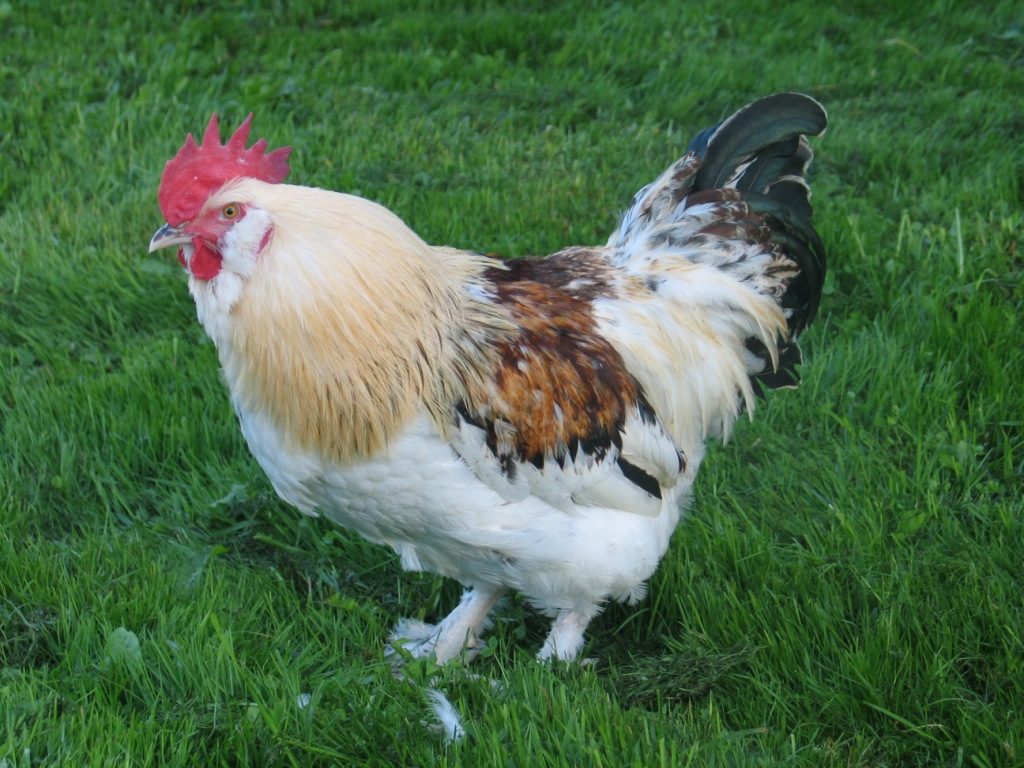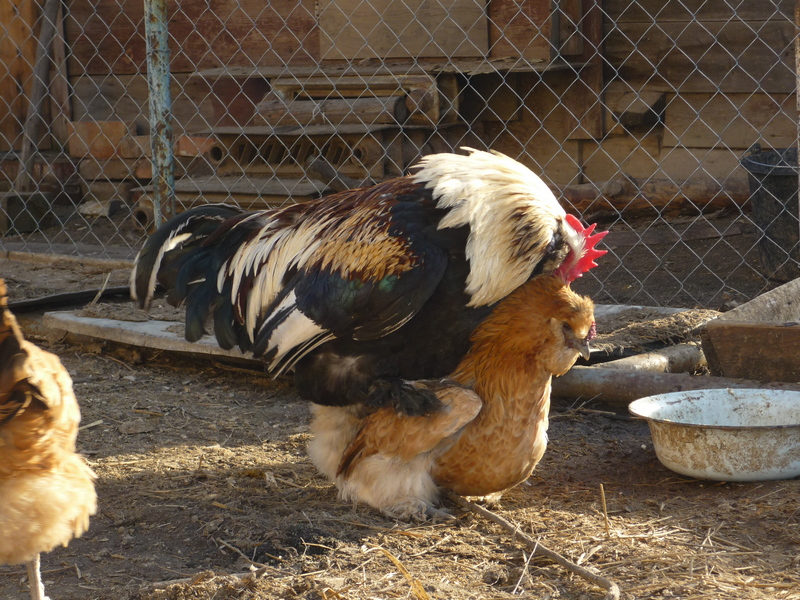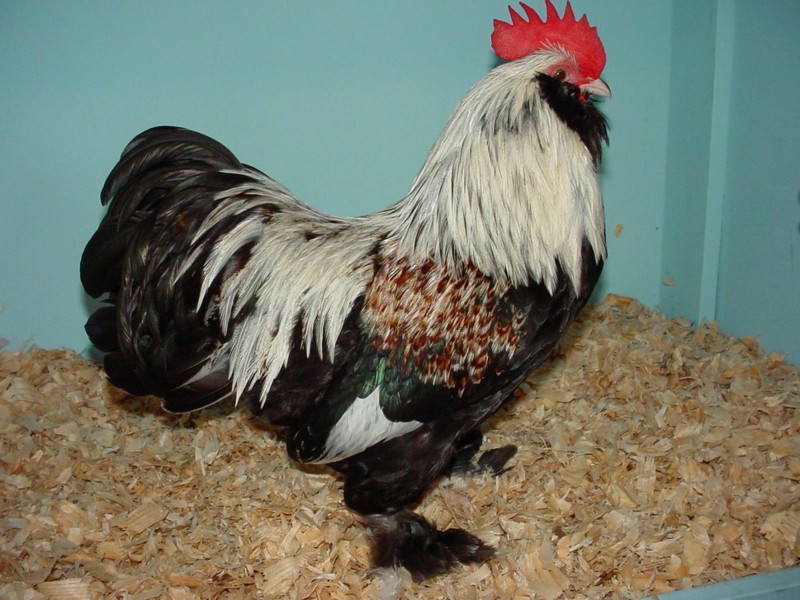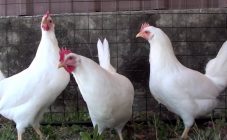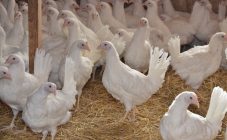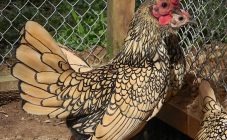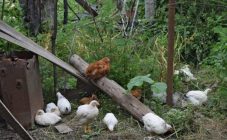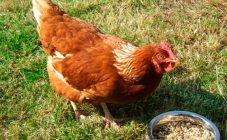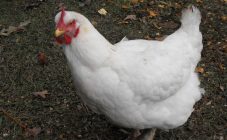Content:
Faverol is a chicken breed bred in France, in the 18th century, in the village of the same name (meat Cochinchins, Brahma were crossed with local Manta chickens), the goal of poultry farmers at that time was to create the ideal meat for cooking excellent broths. The efforts of breeders for more than two hundred years have added exquisite external characteristics and egg production to chickens.
Allocate varieties: Salmon, or Lakhshuner; Colombian, or Silver; Blue.
Characteristics and description of the breed
Chickens with five fingers are raised for show only in most countries. Beautiful, stately chickens with a beard and sideburns are a suitable decoration for a master's yard, but elegance is far from their only advantage.
Initially, the breed was considered to be meat-oriented (meat is tender, juicy, white, fine-fibred), but now the egg production is rapidly gaining momentum (up to 160-180 large eggs, up to 60 grams). The eggshell is dense, brownish-pink, brownish in color.
Description of Faverol chickens:
- Weight - 2-3.5 kg for a chicken, 4-5 kg for a rooster (dwarf Faveroli weigh about 1 kg);
- The head is small, slightly flattened, flat;
- Small but powerful beak, white, pale yellow or pinkish;
- Ridge of medium size, simple format, with uniformly carved high teeth, erect, leaf-like type, low;
- The neck is medium in size, dense, with lush plumage;
- The eyes are of medium diameter, reddish-orange in color;
- The face is covered with red skin and moderately pubescent. A characteristic beard is located under the beak, red lobes are covered with tanks. Earrings are not fully developed.
- The body, set horizontally, is slightly elongated, trapezoidal, with a massive, overweight chest and well-formed muscles. Long back, turning into a powerful, dense loin with rich plumage.
- Deep belly;
- Raised tail with short tail feathers;
- The wings are set high on the body, fit tightly;
- Well-developed legs, with abundantly feathered, low shins, no spurs (hawk tuft), medium-long metatarsals, white, a special feature of the breed - five toes;
- The bones are thin;
- The skin is white, creamy white;
- The feather is dense, the plumage is luxurious, soft, loose;
- The coloration is multifaceted (salmon and silvery colors are the most typical).
You can distinguish a rooster from a chicken by the following differences:
- Faverol roosters have brighter plumage than layers;
- the male has larger body parameters, according to the parameters his body is a square, the chicken has a rectangle;
- the chicken has a more squat, overweight constitution;
- the hens have a roof-like tail, the rooster has short, curved braids.
Not many people know how to distinguish the sex in Faverol chickens, not everyone succeeds in this with accuracy.
It is possible to distinguish females from males only two months after hatching:
- the cockerels have a beard and tanks, the feathers on the tips of the wings are noticeably darker than that of chickens;
- chickens fledge faster than cockerels;
- the scallop of males grows faster, has a more intense color, their legs are larger;
- cocky behavior.
Conditions of detention
Chickens Faverol rather negatively tolerate cellular, aviary content.The ability to easily "sort out" in weight requires physical activity.
Walking
For these purposes, a wide, free range is suitable, which does not need to be fenced high, since in this regard the chickens are very lazy. Chickens taking such walks have the opportunity to get grazing (plant food) rich in trace elements, vitamins and minerals, due to which they increase egg fertility and immunity.
Chicken coop
Chickens need a spacious chicken coop. The floor is covered with a dry mat, the air humidity is kept under strict control (they do not tolerate high humidity). The danger of diseases increases with a large crowding of birds, so it should not be allowed. To prevent the birds from scattering feed, the feeders are hung or special partitions are made in the feeding containers. The perches are equipped with ladders for climbing.
The diet
The birds are given food only fresh, balanced and healthy. The presence of proteins and proteins is mandatory (they have a positive effect on the level of egg production in layers and the growth of the young generation). The main feeding consists of: grain (150 g per head), a variety of root vegetables, herbs, vitamin flour and suitable waste from the master's table. In winter, greens are replaced with sprouted wheat.
Diseases
Faverol chickens are quite disease resistant. The greatest danger is brought by growing in conditions of high room humidity and damp litter. Non-compliance with optimal conditions causes disease and death of the bird. Chickens are susceptible to worms, ticks. For the purpose of prevention, a volumetric container with ash is installed in the chicken coop so that the bird can easily clean the feathers. Prevention of worms is carried out once a year.
Breeding
According to the description of poultry farmers, Faverol chickens have practically lost the instinct for breeding. Therefore, hatching is possible with the help of an incubator or other hen. In rare cases, the Faverol chicken can sit on eggs, but it is not at all a fact that she will hatch them. For better reproduction, keep 5-6 chickens and 1 rooster. In this case, the male must be of a different breed line, otherwise closely related crossing will lead to the appearance of defects in the offspring and the degeneration of breed characteristics. The best time for breeding is February. Faverol chickens hatch on the 22nd day.
It is recommended to observe the following nuances:
- eggs from hens that have reached at least one year are suitable for breeding;
- the duration of storage of eggs is no more than 14 days at a temperature not higher than +10 degrees;
- the temperature regime of the incubator is strictly at + 37.6 ° С, any jump leads to anomalies;
- hatched chicks are kept in a room with a temperature of at least 38 degrees Celsius, with dry, warm litter;
- on cloudy, dark days, periods of short daylight hours, use additional artificial lighting.
Chick feeding
From birth, they give finely chopped boiled eggs, cottage cheese, corn porridge. After 10 days, complete chicken feed is introduced: within a month - up to 6-8 times, then another month they feed 4 times, and then switch to 3 single feeding.
Breed advantages and disadvantages
Poultry farmers argue that, despite the shortcomings, the Faverol breed has quite significant positive aspects.
Positive traits:
- attractive appearance;
- early maturity, rapid growth of young animals;
- year-round egg production;
- good cold tolerance, easy adaptation to various weather conditions;
- delicious meat and eggs;
- calm and docile nature of birds;
- excellent immunity in chickens and adults.
Negative traits:
- excessive weight gain due to improper feeding;
- loss of productivity when crossing with other breeds;
- lack of maternal instinct;
- difficulty in maintaining a purebred breed;
- difficulty of acquiring.
Although raising this breed does not require any special effort, Faverol chickens are still a rare sight in the barnyard. First of all, because the owners sell young animals and eggs at too high prices that few people can afford. Chickens are undoubtedly suitable for those who want to get good products with minimal feed costs - the breed is not capricious, not picky about food, it grows well at home.
